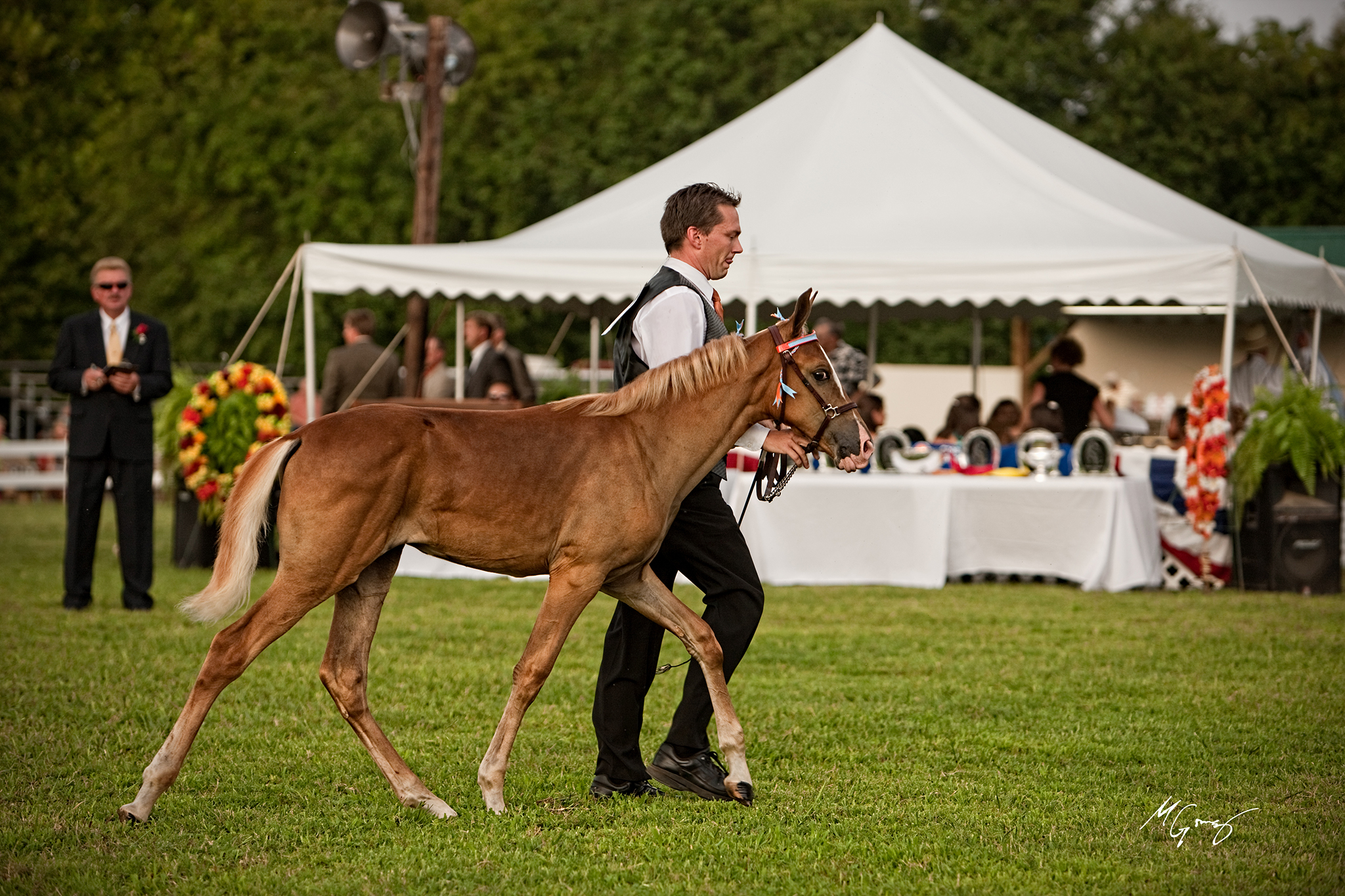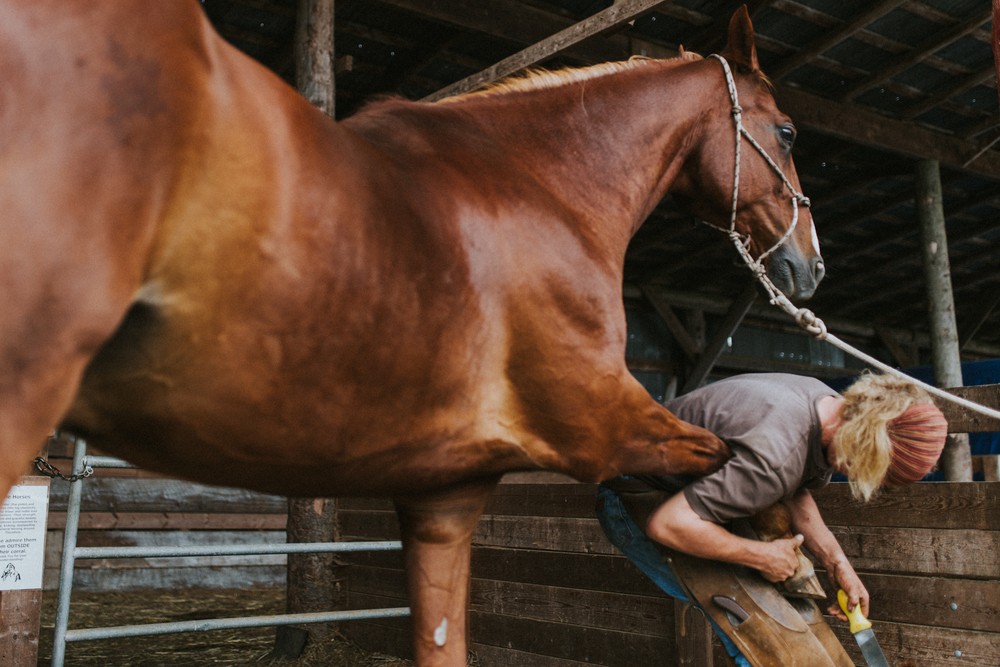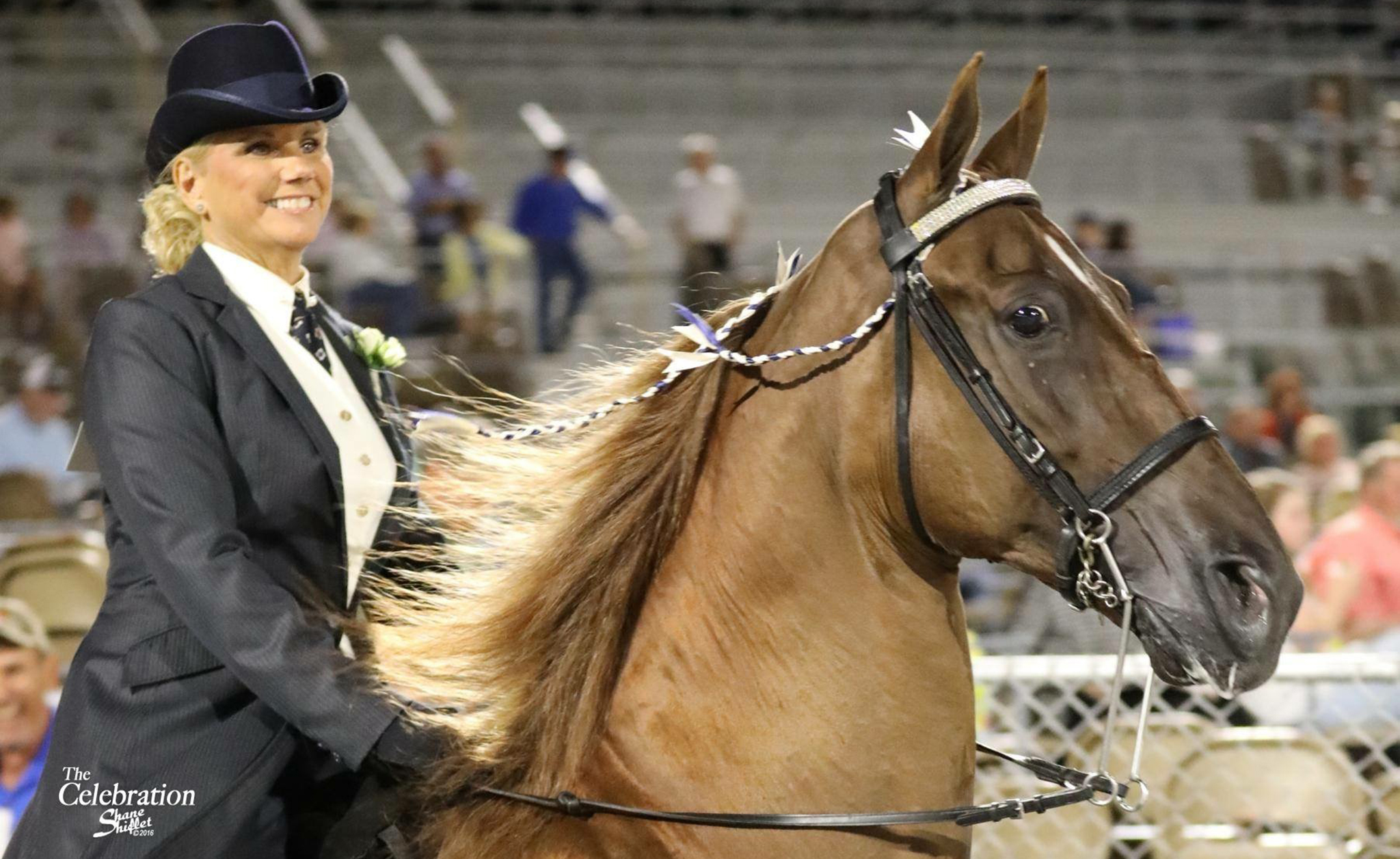
JUDGING
The Tennessee Walking Horse is shown under both English and Western tack and attire. There are divisions for both padded and flat shod horses in the show ring.
The flat shod segment of the walking breed has grown tremendously due to the easy training of the breed, and the natural inherited gaits. Many people are able to maintain their horse without the aid of a professional trainer.
The flat shod plantation pleasure horse should display brilliance and show presence while performing true walking gaits. Any tendency to pace, rack, or trot should be penalized. Form should not be sacrificed for speed. The horse is to be well mannered and manageable on a light rein. Manners are paramount for a pleasure horse and should be given serious consideration in judging. The horse should be well balanced, both fore and rear. He must back readily on command, and respond to the rider’s signals to perform all gaits without necessity of bumping or pumping of the reins. The horse shall enter the ring at a flat walk, and when the gate is closed, the Judge shall call for the running walk, flat walk, and canter. The head motion of the walking horse is very important. If he isn’t nodding, he isn’t walking. Horses shall be worked both ways of the ring. English tack and attire are mandatory for this class. Neatness and taste in attire are encouraged and should be a consideration in the final judging.
In a model class the horse should be shown in a bridle, led into the ring and parked for judging. Conformation and condition are paramount. Horses must stand quietly. Unruly entries must be excused.
Western pleasure entries shall reflect the suitability of a walking horse as a western working horse, exhibiting an exceptionally smooth, comfortable ride without excessive animation. A good western pleasure horse should have a balanced, flowing motion with a free and easy gait. The horse should be ridden on a loose rein, and should exhibit a true, four beat walking gait with cadenced head nod. The head set should be natural, neither excessively nosed out or over flexed at the poll. The head should not be high but the horse should exhibit the type of head carriage natural for a TWH used as a western working horse. If a western horse does not stand quietly, he must be penalized. If a western horse has a fast, uncontrollable canter or requires pumping or bumping, he must be penalized.
The performance Tennessee Walking Horse (sometimes referred to as padded or built up) is shown in English attire and tack. It executes the basic gaits with more animation and accentuated brilliance.

SHOEING
The walking horse that is used for pleasure riding requires no special shoes. On an average, the walking horse will be shod at a slightly lower angle with more natural toe than some of the stock type horses. If your horse is shod when you purchase it, have your local farrier check the angles, etc., of your horse’s shoes at that time, before the horse loses a shoe or its foot grows beyond the desired length and angle. Keep a record of these angles and lengths and have them handy when the farrier shows up.
Performance horses of the walking horse breed are commonly shown with double nailed and triple nailed pads to add dimension of the hoof, provide a sounder base and change certain angles and paths in the motion of the hoof. Pads are an integral part of the training of the performance Tennessee Walking Horse. They serve various functions and, when utilized properly, aid greatly in accentuating the gaits of the show horse. Pads are, essentially, training devices and their effectiveness and usefulness will vary with each individual horse.

TACK
A Tennessee Walking Horse requires no special equipment. The saddle or bridle is no different from the saddle or bridle used on any other breed. A western saddle is most often used on the trails but some prefer the flat, cut back English type saddle for recreation and show.
